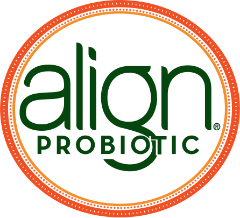
PROBIOTIC TIPS
How to Choose The Best Probiotic
What are Probiotics?
Simply put, probiotics are live bacteria that when consumed, may provide a health benefit. A common misconception is that all bacteria are harmful “germs,” but not all bacteria are bad. In actuality, bacteria can be broken down into two categories: good bacteria and bad bacteria. Good bacteria help your body digest food and produce nutrients, and we always want a healthy number of good bacteria in our bodies at all times.
Why Take Probiotics?
Essentially, probiotics are microbes that have been shown to promote health and wellness in humans.
They help maintain the delicate balance between the good and bad bacteria in your gut microbiome, which is made up of trillions of bacteria and is considered a key to overall health. The good bacteria form a mutually advantageous (or “symbiotic”) relationship with your body. For instance, some probiotics help break down the food we eat and provide digestive support.
What are the Benefits of Probiotics?
Scientists have a lot to say about the potential benefits of taking probiotics.
Hundreds of papers have been published about the various health benefits associated with probiotics. And over the past few years the pace of publication has been increasing. Some probiotic strains have been shown in studies to have immune benefits (for example, Bifidobacterium lactis HN019 and Lactobacillus casei DN114001) and others have data to support digestive benefits (for example, Bifidobacterium 35624™, the strain found in Align® Digestive Support).
Are There Different Types of Probiotics?
There are many different types of probiotics, and no two are exactly alike.
The majority of probiotics contain bacteria from the genus Lactobacillus or the genus Bifidobacterium. However, it’s important to understand how bacteria are identified so you can recognize the differences between probiotics. Scientists identify bacteria by their genus, species and/or subspecies, and strain. For example:
Genus: Bifidobacterium
Species: longum
Strain: 35624™
One of the most important things to note here is the strain because it determines the health benefit. Basically this means that even if two types of probiotics have the same genus, they may have a different strain which offers a different health benefit.
Are Multiple Strains Better When Choosing a Probiotic?
No, the number of strains does not determine if one probiotic is better than another.
Some probiotic brands offer products with multiple strains of bacteria with the rationale that this may replicate the normal environment of the gut. However, research has shown that the "more is better" concept is not necessarily true. Multiple strains do not make one probiotic better than another. The specific strain in the probiotic and the research supporting the health benefits of the strain(s) is important to consider when choosing what probiotic is best for you.
What Should I Look for in a Probiotic?
Try not to be swayed by packaging or commercials. Before you decide what is the best probiotic for you, we recommend considering three factors:
- Strain: The individual bacteria strain determines the health benefits you should expect from the probiotic.
- Proof: Any claims about health benefits should be backed up by scientific studies on that product and the probiotic strain in it.
- Transparency: The packaging should provide you with clear information about the number of live microorganisms (often labeled as CFU or Colony Forming Units) in each serving, the strains or specific strain in the product, the suggested daily serving size, the expiration date, any storage instructions, and corporate contact information in case you have any issues or questions.
If you don’t see this information readily available, try to look for a product which does provide it.
What’s the Best Source of Probiotics?
There are three main sources of probiotics: supplements, yogurts, and fermented foods. Of these three types of probiotics, there are advantages and disadvantages to each.
First it is important to understand not all yogurts and fermented foods are probiotics. Only yogurts and fermented foods that have been proven in scientific research to provide a health benefit are probiotics. Many yogurts and fermented foods contain bacterial strains that have not demonstrated a benefit. Additionally, refrigeration to protect the microbial populations may be required.
Supplement type probiotics most often come in chewables, powders, or capsules. With these products personal preferences regarding tastes, swallowing pills, convenience, and packaging to protect the CFUs are important. Choosing the product that provides the desired strain(s) is most important in determining the health benefits you can expect.
Do I Need a Probiotic?
If you’re considering what is the best probiotic for you, you should discuss it with your doctor or gastroenterologist. He or she can help guide you on which probiotic might be best for your health and direct you to a specific product.
How Long Should I Take Probiotics?
Generally, there is no set amount of time you have to take probiotics. It depends on the desired benefit you are seeking. Most probiotics on the market today recommend dosing one or more times a day.
We recommend people take them every day to ensure a continued presence in your digestive tract and maintain the health benefits they offer. If you take a break in your consumption of probiotics, you may notice that the health benefits taper off over the course of 1 – 4 weeks. This may be due to your body’s microbiome returning to its normal state after you stopped supplementing it with a probiotic.
Do I Have to Take Probiotics with Food?
As a general rule, you can take probiotics at any time of the day, with or without food. Some types of probiotics may have special storage instructions, so those should be followed to maximize their effectiveness.
